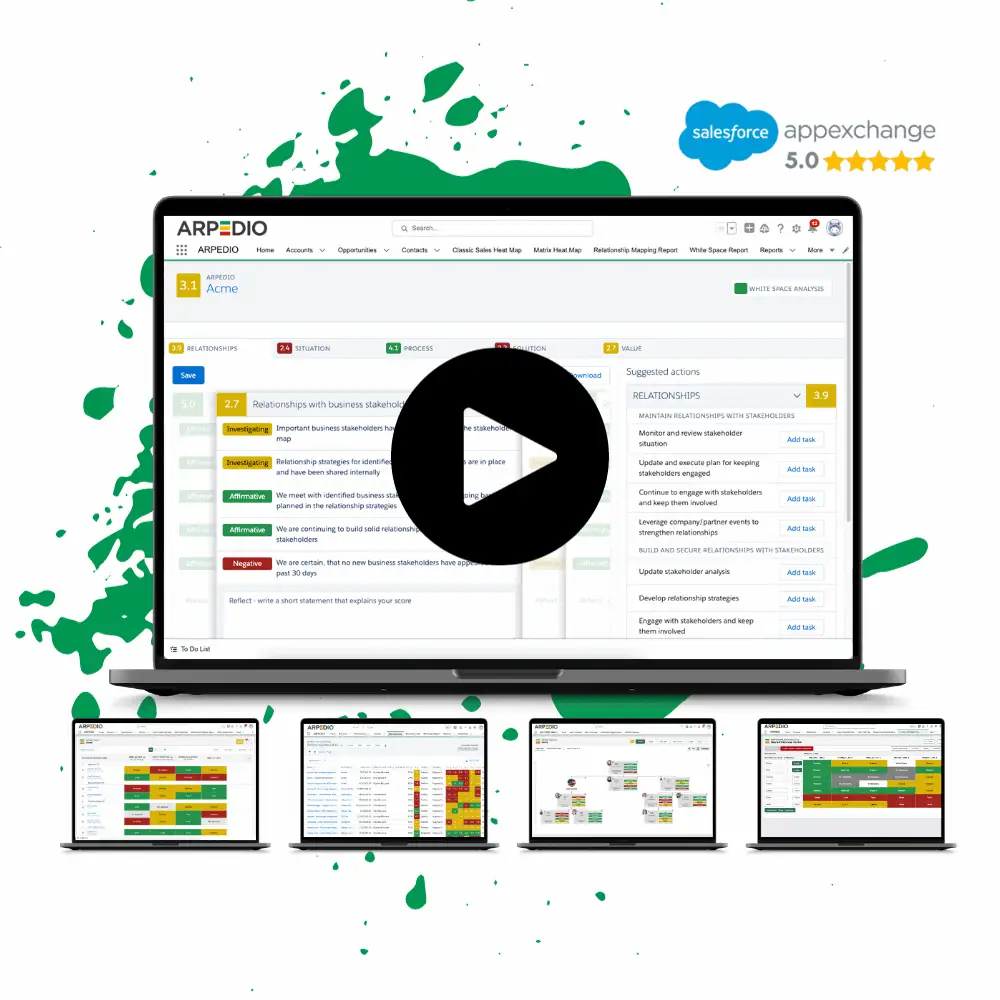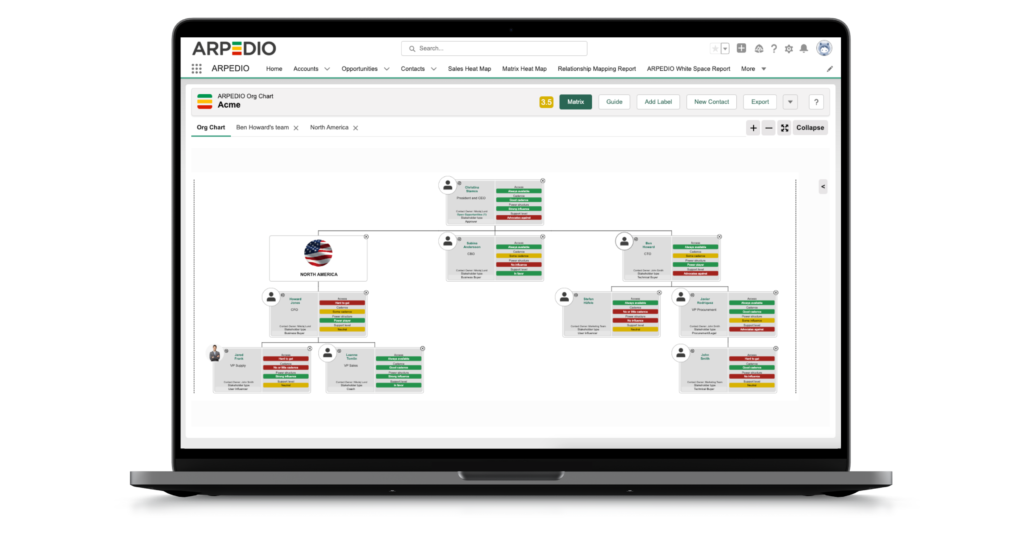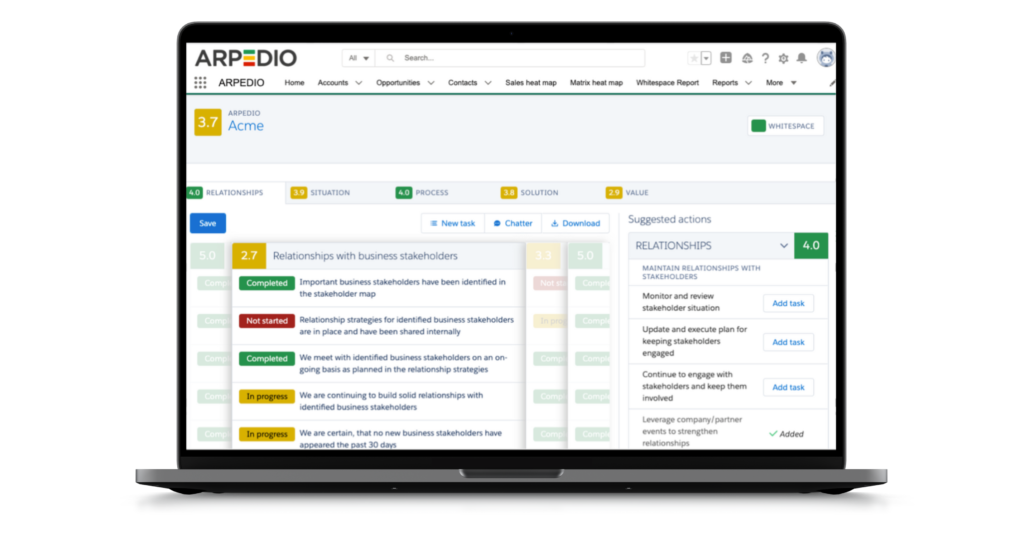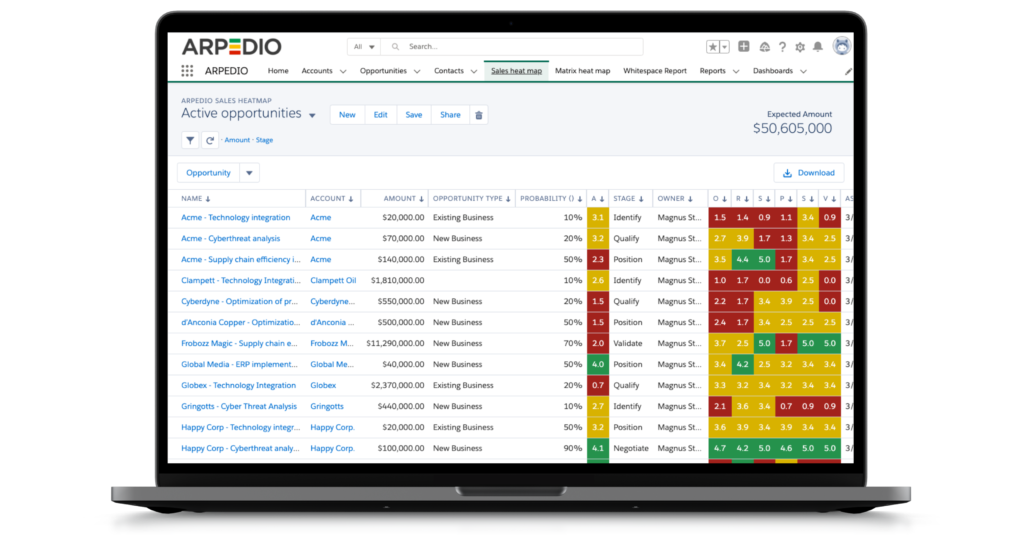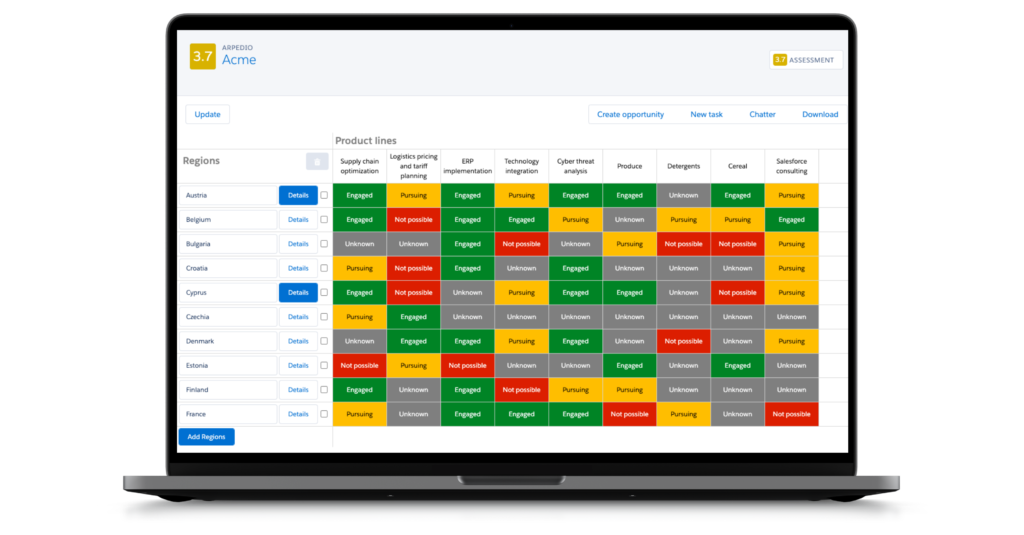There’s no way around it. Account-Based Selling (ABS) has emerged as a powerful strategy. And at the very heart of ABS lies the concept of personalization, a practice that has become increasingly vital for businesses aiming to forge strong, lasting relationships with their target accounts. In this blog post, we’ll delve into the significance of personalization within ABS.
Table of Contents
Importance of Personalization in Account-Based Selling (ABS)
Account-based selling has emerged as a strategic imperative for organizations seeking to engage their most valuable accounts, and central to the success of account-based selling is personalization. Let’s dive a little bit deeper into the (manyfold) significance of personalization within account-based selling, as we uncover the transformative impact it has on the way we connect, engage, and build relationships with target accounts:
- Tailored engagement
One-size-fits-all marketing and sales approaches are no longer effective in today’s competitive landscape. Personalization allows you to tailor your messaging and outreach to the specific needs, pain points, and preferences of each target account. This custom approach makes your messages connect better with the unique difficulties and objectives of each customer, increasing the likelihood that they will be interested in your content and what you have to offer. - Enhanced relevance
Personalized content and interactions demonstrate that you’ve done your homework and understand your account’s business. This enhanced relevance goes a long way in building trust and credibility. When prospects feel that you truly understand their industry, challenges, and aspirations, they are more likely to view your brand as a valuable partner. - Higher conversion rates
Account-based selling often involves dealing with a limited number of high-value accounts. Personalization can significantly boost conversion rates within this select group. By tailoring your content and outreach, you increase the chances of turning prospects into customers. A personalized approach can also expedite the sales cycle by addressing objections and concerns proactively. - Improved customer retention
Personalization isn’t just for attracting new accounts; it’s equally important for retaining and expanding existing ones. When you continue to personalize your interactions throughout the customer lifecycle, you demonstrate an ongoing commitment to meeting their evolving needs. This, in turn, fosters loyalty and encourages repeat business. - Competitive advantage
In a world where competition is fierce, personalization can be a key differentiator. Businesses that excel at tailoring their account-based selling strategies stand out from the crowd. They showcase a deep understanding of their clients, positioning themselves as partners rather than vendors. - Data-driven insights
By leveraging data on account behavior and preferences, you can refine your account-based selling strategy continuously. A data-driven approach allows you to adapt to changing market conditions and customer needs effectively.
Strategies for implementing personalization in ABS
Personalization in account-based selling is more than just addressing your target accounts by their first name. It involves a strategic approach to tailor your content, messaging, and outreach at every stage of the sales journey, providing real value and demonstrating a deep understanding of your target accounts’ needs and challenges. By implementing the following strategies, you can create a robust and effective personalization framework for your account-based selling initiatives.
Here are some effective strategies to implement personalization in account-based selling:
- Buyer personas: Develop detailed buyer personas for key decision-makers within your target accounts. Understand their roles, responsibilities, pain points, and motivations. This in-depth knowledge enables you to craft content and messaging that resonates with each persona’s specific concerns and priorities.
- Account research: Invest time in thorough research for each target account. Gain insights into their business challenges, recent developments, and strategic objectives. Use this information to tailor your messaging and demonstrate your genuine interest in their success.
- Personalized content creation: Create content that speaks directly to the unique needs of each account or persona. This can include custom whitepapers, case studies, webinars, and even personalized video messages. The goal is to provide value and solutions tailored to their specific challenges.
- Dynamic email campaigns: Utilize marketing automation tools to send dynamic email campaigns that personalize content based on the recipient’s profile, behavior, and engagement history. Personalized email subject lines and content can significantly increase open and click-through rates.
- Continuous optimization: Regularly analyze the performance of your personalized account-based selling efforts. Use A/B testing and analytics to refine your strategies further. Personalization is an ongoing process that should evolve as you gather more data and insights.
Ready to increase customer lifetime value?
Challenges and solutions in content personalization
While content personalization is undeniably powerful in account-based selling, it’s not without its challenges. Understanding these obstacles and having effective solutions in place is essential to harnessing the full potential of personalized content. Here, we explore the primary challenges and the strategies to overcome them:
Data quality and availability
Challenge: Personalization relies heavily on data. Inaccurate or insufficient data about target accounts can hinder your personalization efforts.
Solution: Invest in data enrichment tools and services to ensure you have up-to-date, accurate, and comprehensive information about your target accounts. Regularly clean and update your data to maintain its quality.
Content Scalability
Challenge: Creating personalized content for each account can be time-consuming and resource-intensive, particularly when dealing with a large number of accounts.
Solution: Develop a content library with modular components that can be customized and combined to create personalized content efficiently. Automation tools can also assist in scaling personalization efforts.
Technology integration
Challenge: Integrating various marketing and sales technologies to deliver personalized content can be complex and may require a high level of technical expertise.
Solution: Choose technology platforms that offer seamless integration and compatibility, like ARPEDIO. Consider utilizing Customer Relationship Management (CRM) systems, marketing automation tools, and personalization software that can work together harmoniously.
Privacy and compliance
Challenge: Personalization involves collecting and using customer data, which raises privacy and compliance concerns, especially with regulations like GDPR and CCPA.
Solution: Implement robust data privacy policies and obtain explicit consent when collecting and using customer data. Ensure that your personalization efforts comply with all relevant regulations and ethical standards.
Resource allocation
Challenge: Determining how to allocate resources effectively among different accounts can be tricky, especially when dealing with a diverse range of accounts with varying needs.
Solution: Implement account scoring and prioritization models to identify which accounts are most likely to convert or require immediate attention. Allocate resources based on these insights.
By recognizing these challenges and proactively implementing these solutions, your account-based selling personalization strategy can navigate potential roadblocks and deliver the tailored, relevant content that drives engagement and success with your target accounts.
Measuring the impact of personalization in ABS
Naturally, it’s not enough to implement personalized content strategies—you need to measure their impact to understand what’s working and what needs improvement. Here’s some useful strategies you can implement to effectively measure the impact of personalization in account-based selling:
1. Engagement metrics:
Track metrics such as email open rates, click-through rates, website engagement, and content downloads specific to your target accounts. Analyze how personalized content influences these metrics.
2. Conversion rates:
Examine the percentage of target accounts that progress through the sales funnel. Compare conversion rates for personalized outreach versus generic approaches to assess the impact of personalization on conversion.
3. Pipeline velocity:
Monitor the speed at which target accounts move through the sales pipeline. Determine if personalization accelerates the sales process by addressing account-specific needs more effectively.
4. Feedback and surveys:
Gather direct feedback from target accounts through surveys or feedback forms. Ask about the relevance and effectiveness of personalized content and interactions.
5. Content performance:
Analyze the performance of individual pieces of personalized content. Identify which content types and topics resonate most with different accounts and personas.
6. Customer satisfaction and Net Promoter Score (NPS):
Gauge customer satisfaction levels and NPS scores for accounts that have received personalized interactions. Determine if personalized engagement correlates with higher satisfaction and advocacy.
By actively measuring the impact of personalization in account-based selling, you gain valuable insights into how personalized content and engagement strategies influence the customer journey and the bottom line. These insights empower you to make data-driven decisions, refine your personalization efforts, and continuously improve your account-based selling strategy for better results.
Conclusion
In account-based selling, the power of personalized content shines brightly. Throughout this blog post, we’ve explored the multifaceted significance of personalization, its challenges, and the means to measure its impact.
Personalization is not merely a buzzword; it’s the heartbeat of modern account-based selling. It allows us to transcend generic outreach, forging connections that resonate deeply with the unique needs, challenges, and aspirations of each target account. Through tailored engagement, we cultivate trust, expedite conversions, and nurture enduring relationships.
Enhanced relevance, a competitive edge, and data-driven insights become our allies as we harness the power of personalization. Challenges such as data quality, content scalability, and privacy concerns become opportunities for innovation and improvement, met with solutions that empower us to create ever more effective personalized strategies.
In this era of account-based selling, personalized content is not a luxury; it’s a necessity. It transforms account-based selling from a transactional endeavor into a dynamic, value-driven partnership. It enables us to tailor our approach to the unique stories of each target account, positioning us as trusted advisors and partners.
As we conclude this exploration of personalized content in account-based selling, remember that the journey is ongoing. Stay attuned to evolving customer needs, embrace the latest technologies, and commit to a culture of continuous improvement. By doing so, you’ll not only unlock the full potential of account-based selling but also create lasting, profitable relationships with your most coveted target accounts.

